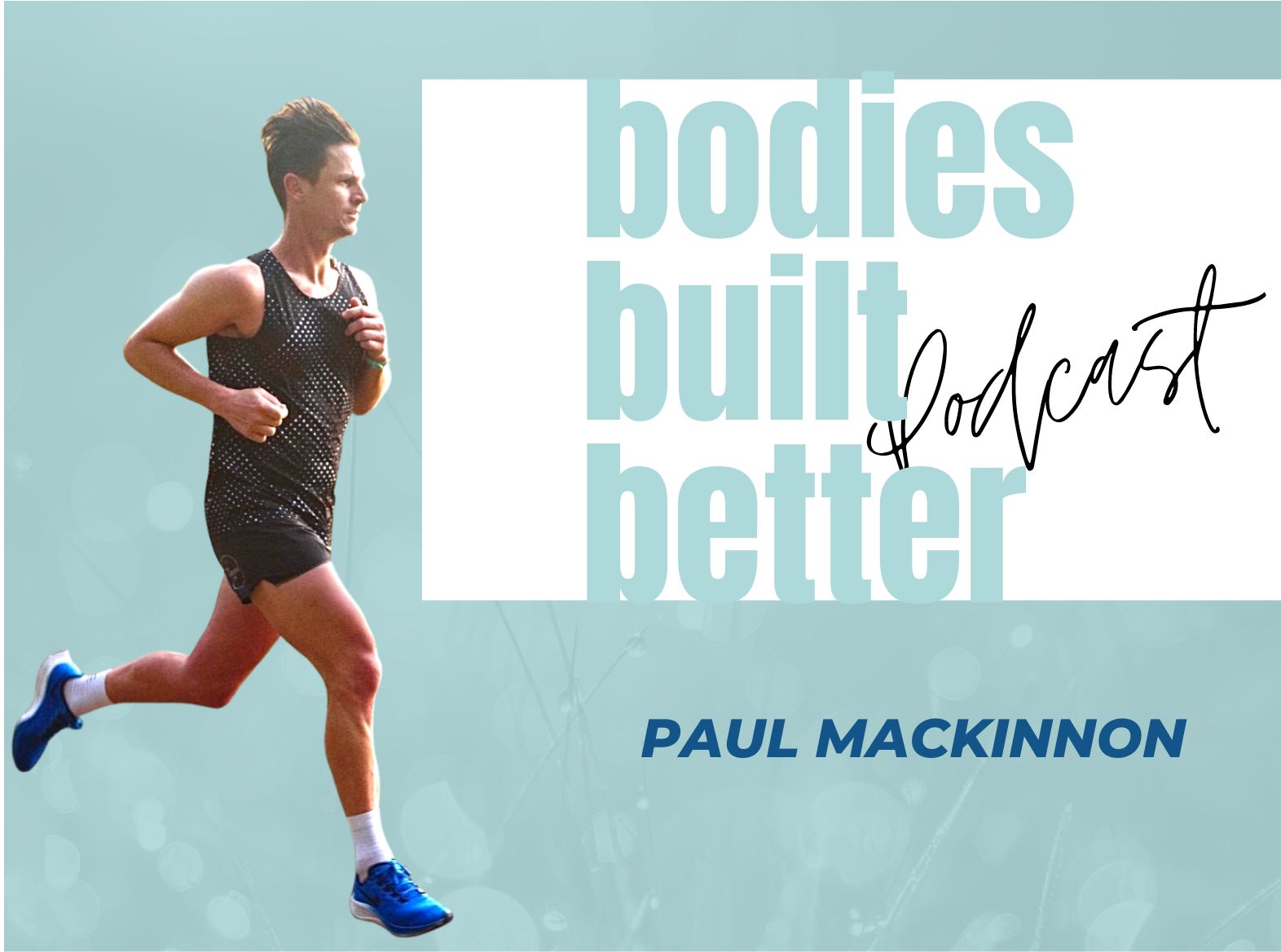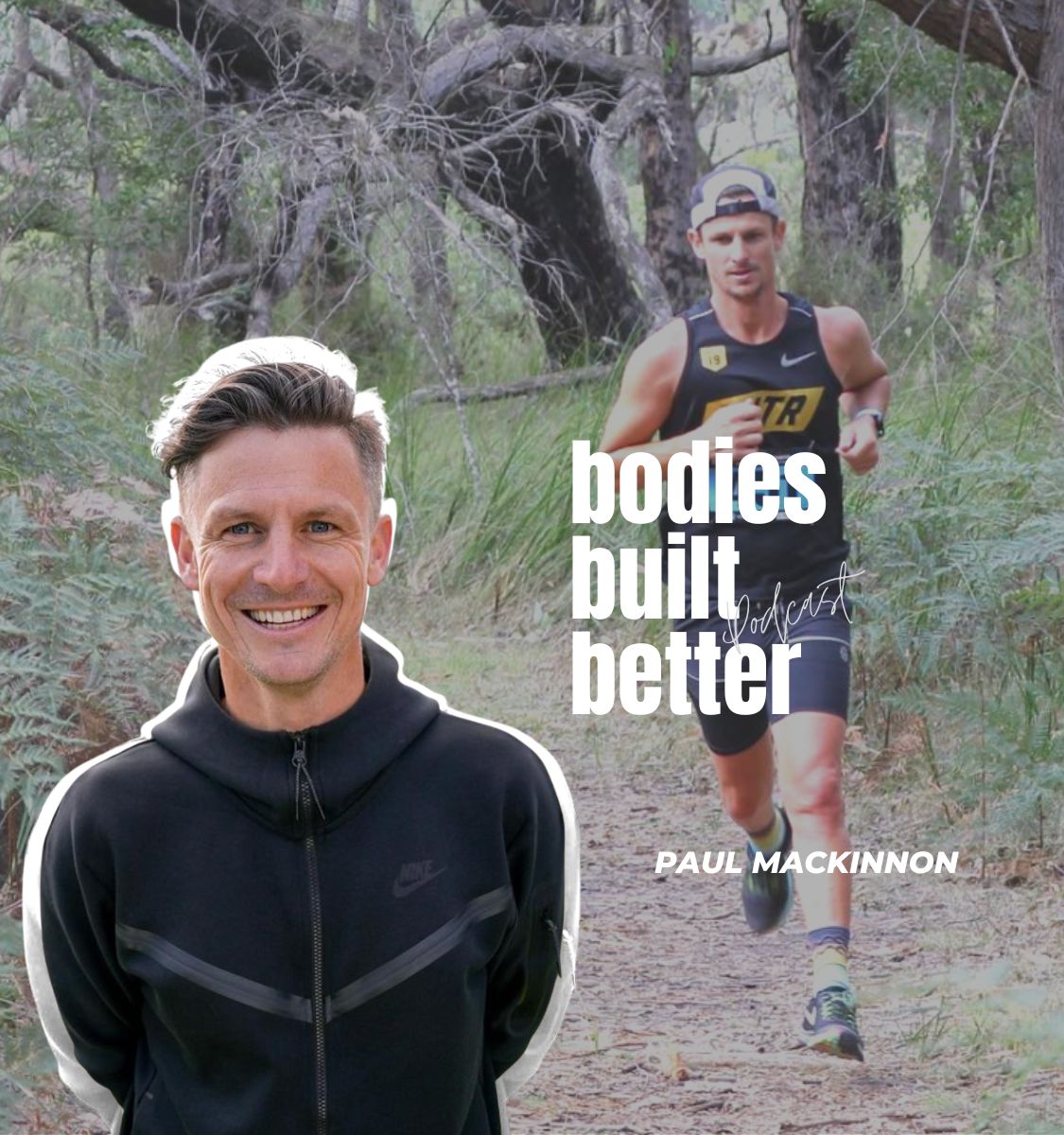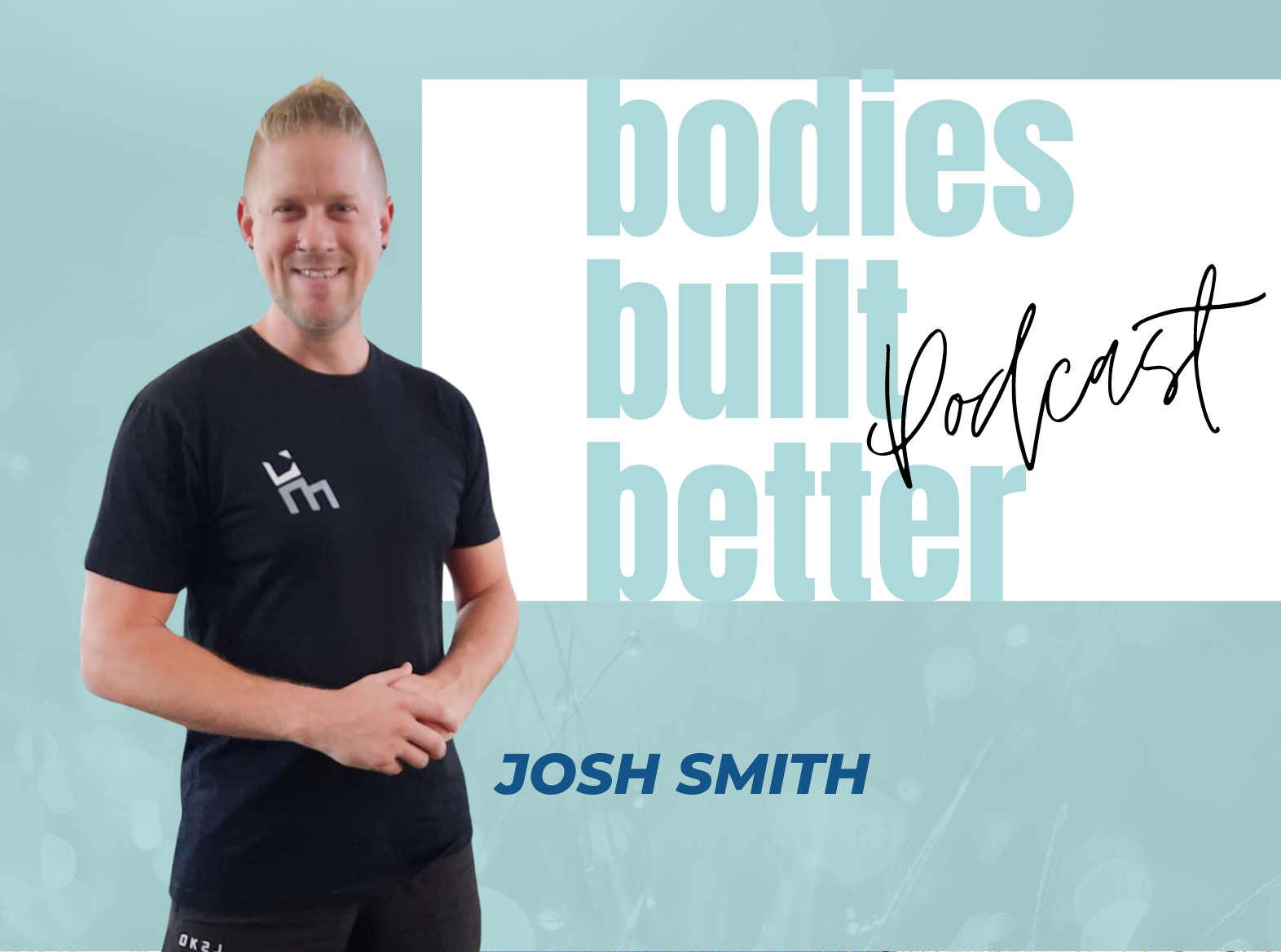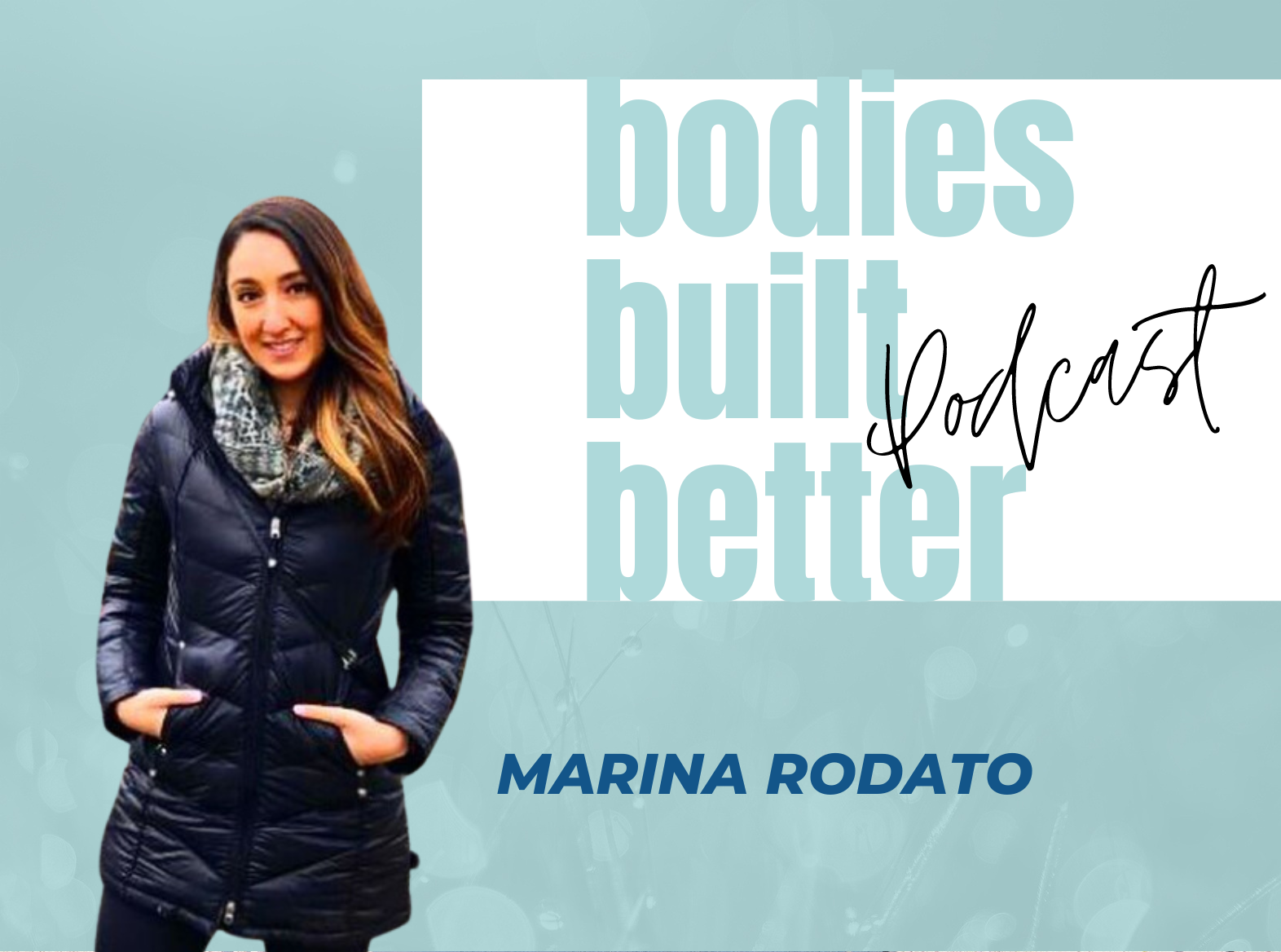From Hockey To Running: How Paul Got His Start
Jackie 1:27
Paul, thank you so much for chatting with me today. Welcome to the Bodies Built Better podcast.
Paul 1:32
Thanks for having me. It’s actually a really nice afternoon to be indoors here in Melbourne. So you’ve actually done me a favour to be honest.
Jackie 1:38
I’m very good. Indoors in Melbourne, noted. I’d say that happens a lot, doesn’t it?
Paul 1:46
Yeah, you probably could say that. But I’m originally from Canberra. So you know, like it’s, maybe it’s a little bit better option. Yeah. Are you having a crack at our lockdowns?
Jackie 1:56
Yeah. All right. Well, I am really excited about this conversation. As a remedial massage therapist I have, I work with a lot of athletes, a lot of runners, triathletes, and obviously, all types of sports, and they will require running. And so one thing that comes up, especially, you know, when people see me, and they’ve got their little niggles and soft tissue injuries, is running technique. So I’m excited to dive deeper into this today with you. But before we get into that, you didn’t start as a runner. You’re a hockey player for 15 years, to Indoor World Cup. Yeah, with, with Australia as well. Yep, yeah. So tell us about that time of your life and then how you eventually came into running coaching.
Paul 2:56
It’s probably like a few different factors rolled into one to get to this point. And it’s probably only reflecting on 12 months ago to realise what I’ve done is actually made up to the ability to do what I’m now doing as a hockey was the you know, as a family sport, the youngest of three so got into that as a result of just seeing obviously links, six, seven years older, I was actually didn’t really have much of an opportunity to choose anything else. I think. You’re doing this I was just like, Oh, they’re doing it, I’ll do that. And in Canberra, big fish small pond, I think once you sort of know, okay, at it, you kind of stick to those things a little bit more readily. And like I genuinely did love it as well. I reckon it was probably that’s, I think I was 17 and started playing nationally, in, in Australia, so nationally, is kind of the national calm, and did that for I think 15, 16 years between Canberra and and then down in Melbourne, I moved to play Victoria. And in that time, though, as you mentioned, the World Cups, the indoor, got to high level within Australia for outdoor but just wasn’t good enough and going through like a period where we won gold medals and were sort of top of the world for a long period of time and as a hard group to crack into. And you know, so it’s clearly not quite good enough to get into that. But then played in Europe for five seasons as well. So I lived and worked playing hockey, so that was my job in Holland for four years and Spain for you. So I got to kind of spend a bit of time living overseas playing hockey as my, as my job and that was a pretty cool experience, both in just learning lifestyle, growing up, for a lot of food for a lot of for a lot of those experiences. Running is an interesting one like I remember, mid teens, late teens always being much more interested in, in running or wanting to do a lot more running. And it was for hockey. But I was really interested in, in 5k, 10k runners. And I’ve mentioned it a few times. If you play that game as a kid, you know, if you could be a lead at any sport, what would you be, you know, like you often hear golf or tennis or quarterback, I remember saying like 10k runner, which was dumb as a financial response that I’d sort of had. So I had a real interest in it early. And in Canberra, there’s amazing fire trails around the place to do running. And yeah, I just like to do it on the outside of, outside of hockey training, used to go out there. But that also subsequently kind of led into what I’m doing now. And I remember out running on a, on a dirt path and just hearing different footsteps, like it just sounded different. And it just didn’t make sense for me as to why that would be. And just started to change things up in the top half of my body just to start to work out how that influenced the bottom half. And that was kind of the, almost like the start of the process of starting to question what, what had always been done for coaching for running and/or how that influences movement patterns. So that was probably a start in the interest side of running movement and how everything connects. But then through the hockey I also met a coach, who would do our speed and agility, who I started to chat to him about that sort of stuff. And, and he was kind of on a similar path in, in coaching and retraining athletes into, into that kind of gaits sort of thing. So I think together and I learned a fair bit off him, but then kind of went on my own little path and did teaching as a degree. So all of them just kind of started to package up into what is my real passion, which is the movement patterns of running and how that influences and affects individuals.
Jackie 6:58
Yeah, amazing. And looking back on your time at hockey, and the training and the drills, are there things that you think now, I could have done that better or should have done it this way or, or alternatively, flipside, that was still great, still use that now?
Paul 7:17
I’m probably more of a former in, in how to learn a skill, even if it’s just the size of the hockey side of it how to how to teach a skill, how to learn a skill, and what it makes up to actually be able to replicate new skills to create that or that habit forming, which is then what I use and implementing in the coaching now with the kind of the new AL way. So once you can understand and feel have that kinesthetic awareness of what your current movement pattern or skill feels like, and what it should feel like all of a sudden, you yourself have that contract, you sort of have that contrast. So you can kind of take it back into learning skills within hockey itself, then it’s probably not something that’s done in a really good manner, holistically in coaching, or they’re essentially skill development. So that’s probably one of them. Yeah, absolutely looking, there’s heaps of things, you could redo and do better for sure. Like you’re kind of reflecting on I was like, at the time, I feel you’re not doing everything I could to get the most but the reality is, you know, like, why wasn’t me anyway. So there’s plenty of those sort of things, which aren’t necessarily regrets or anything, but it is you go, Okay, it’s probably more of a realisation. And it’s, that’s probably just in itself as healthy as anything because you go, Okay, well, I can understand that I wasn’t, which probably almost gives you that solace. Okay, well, if you did, maybe you could maybe you could you kind of accept that you didn’t. And that’s okay. Yeah, that was that was okay for that period of time. So yeah, there’s plenty of stuff.
How He Endured His Surgeries–And Became A Better Runner
Jackie 8:58
Yeah. I’d love to know, you had five knee surgeries before the age of 21’s done? Well, there, I do my research.
Paul 9:13
You’ve done that very well. No way. You couldn’t have even found that.
Jackie 9:18
So, yeah, I think it’s a really important thing to mention, because I feel like people now you know, your recreational runners. They, as soon as a knee injury comes up or they’ve had a knee surgery or they hear meniscus tear or ligament whatever it is, I think they can they it’s sort of just freaks them out a bit and think that running is well off the table. You’ve had five knee surgeries before the age of 21. Can you tell us how did you manage your surgeries and then how do you manage it now so that you can still run?
Paul 9:57
So when I first was when I was 16, which has been meniscus. So there was removal, the partial removal of some meniscus. The second two were. Yeah, the second two thing called osteochondritis. So when the cartilage at the end of the femur in my case was die, falling off, so fell off mid session like really hockey session, one point I felt it go with it up and there’s a big lump on the inside of my knee pushed it went back in and they went to the sideline, pulled up my taxi pants again, because it was Canberra. At the lump was on the other side of the knee pushed it went back in. So there was sizable ones, the first one was at about the size of the 10 cent piece that was falling off the end of the femur.
Jackie 10:47
Wow, was that painful to back in? Or?
Paul 10:50
No, no, it was just more scary. Yeah, so I think when I was I was about 18 at that stage. So I had to go in and get that removed. And you know, they kind of shaved it down and tried to create some sort of waiting because it was down to the bone or wasn’t just the cartilage. And then eight days later, two more little bits fell off. So I had to have surgery again, within that two week timeframe, so there’s two, we can count that as it was two. So that that has left very little articular cartilage on a lateral femoral condyle. on the lateral side anyway, it’s more of a non weight bearing area, but it’s still there. And then the fourth one was a, another meniscus, so on that kind of all on the left side. And it was creating a cyst at the side of the knee. So sort of creating this quite a lump on the outside of the knee. So it was stitched the meniscus back up and remove the cyst, which wasn’t ideal. And then six months later, the the cartilage hadn’t repaired. So it was then removed. So that’s all on that left side. So within four years, I had those five surgeries. And it did. Obviously it affected what is quite important years of development in a physical nature, like that kind of the 16 to 20 is probably more fortunate that I was a little bit of a late later developer. Definitely, maturity wise. Physically definitely. And in some ways, it probably slowed me down a little bit when I wasn’t as physically developed in that that timeframe. But it did kind of cost me a little bit of time off. I guess the the way of managing it was, I was lucky to have a really good physio in, in Canberra who did a bit of push and pull and sort of took care of me as well, at the time that I didn’t like it was frustrated my coach as well, to kind of hold me back a little bit, just knowing that I’d had a few problems. So there was a some outside influence in that regard. But since then, like doing a little hockey for so long, I was really, really conscious of knowing my limitations on artefact, which was probably more of a physical speed and strength, always could run out games, and it was really known to be endurance based being able to get around the ground, but that kind of strength and speed because I mean, I’m not huge. You know, 178? And why not much. So, you know, like, I know, I knew I had to be in the gym a lot. So I was really, really fastidious in making sure that I was kind of there for a long period of time. And consistently. And I think that really helped in regards to just kind of that safeguarding and protecting like, I’d hardly had a soft tissue injury in my whole career. And, you know, part to do with that, I think is, you know, the technical side to it. And part of the conditioning side to it. And maybe I just didn’t run fast enough. I don’t think it was there was I didn’t take very good care of it. Like I hardly drank when I was sort of in my 20s I made sure I kind of took care of that sort of thing. So I think that helps. But even now, like I haven’t really I don’t or don’t have too many problems with it. I still run, like I’ve sort of have gone back to hockey and stupidly, so I haven’t run as much during the weeks but I can get out to kind of 60, 70Ks and not not be bothered by it. And I think it was probably all that conditioning through a long period of time. That’s helped.
A Deep Dive Into Running Technique
Jackie 14:43
Yeah, brilliant. Well, I’m looking forward to diving deep into technique.
Paul 14:49
Yes.
Jackie 14:57
But here we go. Tell us about your approach to running technique.
Paul 15:01
So I’m probably a lot on click compared to the normal, you know, I’m top down, my approach is all top down. Everything that influences the feet, the leg biomechanics and how they work are influenced or affected by what happens in the hips up. So how you hold the spinal position, the shoulders, how those movement patterns occur, are all going to influence how you can use your legs. So if your feet, you know, the contact point between body and ground, there’s no way you’re going to be able to change them in a really efficient or with a long term focus if you haven’t actually, at least considered and, um, understand what’s happening above them. So I’m on top down, the movement patterns that occur there how even they are, you know, what is left and right dominant. Yeah, so it’s that’s, in a nutshell, my philosophy and then and then, you know, obviously broadens out depending on each individual.
Jackie 16:04
Yeah, I love that. Because I’ve it’s one thing that I believe runners don’t even think about because running you do with your legs. So let’s focus on the legs. But but if you’ve got a funky shoulder or lovely little head bobble, that’s going to affect the run. So speaking of head bobble, before we get into what is good, I thought we’d get into what is bad, because I think we’ve all seen someone with not so great running technique. I mean, I, I’ve run or actually don’t run too much at the moment. But when I’m out on the beach path, I see a lot of runners and you’ve seen all sorts of limbs doing all sorts of actions. And I think we can pitch it out. And we know okay, that’s not right. So tell us about the stuff that we shouldn’t be doing.
Paul 17:09
For you, so yeah, we’re gonna get–
Jackie 17:16
Let’s start at the head.
Paul 17:17
Well, I think the head’s probably, is a funny one, like a head is actually a ballast. So anything you do, your head’s going to actually react too. So I think that’s probably the wrong place.
Jackie 17:30
Let’s go down. Shoulder.
Paul 17:33
Yeah, so I’m more about kind of, if you think about a movement pattern, or if you think about a skill, and you think, Okay, what should be the most still, or what should be stationary in a movement. And if you can start from there. So if you think about, like something, even something like a closed motor skill, like a golf swing, part of it deals with the feet. Now, if you don’t have the feet in the right position, nothing you do throughout the whole movement patterns matter. If you’ve got your feet next to each other, are you kind of pointing in the wrong way? So it’s like, okay, well, where do you start? Similar to like a, like a deadlift or a squat? You know, whatever is most stationary or most still, through that movement? How about we start with that? What’s influencing it? How is it being influenced? What should it be like? Now with running as I said, it’s why it’s completely flipped, because the thing that moves the most are the feet. So it’s really hard to start from the foot, if that’s the thing that is at the end of two levers being the leg and moves the most. So with running what shouldn’t be released, instead of being okay, well, it should be kind of torso into head. Now, what influences that, the arms. If you’re moving different left than right, if you’ve got force or directional patterns that aren’t helpful, it’s going to influence how you can hold the torso, and therefore how you can hold or keep stability through hips. So that’s where it’s, my thought process is what is most or what should be the most still or stationary, and start from there. So looking at an athlete, it’s like what are their arms doing to influence and effect shoulders and torso and hips, get them right, so then we can work on shoulders and torso and then kind of hips and then everything that comes off that are the legs and feet. You’ve got hip movement, or shoulder or torso rotation or movement, no amount of strength, we’re going to keep the hips still, you’re not going to be able to use the legs as well. So again, coming back to what should be most still in a movement, and then running it should be around that torso, shoulders and into hips. So start there.
How To Correct Your Own Running Technique
Jackie 19:44
Awesome. So that’s where we start. How do we I mean, how do we know that we’re even doing that in the first place? How do we create that self awareness to go actually, because funny story I’ve had my my technique looked at. And I thought, oh, you know, there shouldn’t be too much too, as one does. And of course there is. And I found well, they found that I am I was, I can’t remember. I feel like he used the word lazy, but we’re good friends. So is allowed to use lazy. just lazy. So I call it my hip swagger. You don’t do that in running, though.
Paul 20:30
No, it’s not ideal.
Jackie 20:32
Yeah. And of course, I didn’t know this until, you know, he pointed out to me. So how do we create that self awareness to know where to where to change or? Yeah.
Paul 20:45
What you’re doing, I think there’s two ways you can do it, if you’re doing it by yourself. You know, like, if you don’t want to have someone have a look at it, or you know, not interested in someone looking at someone like myself to look at it all. Or even go through that process, the easiest thing to do is record yourself, record yourself and have a look, because perception and reality within movements. Nine times out of 10 completely off. And you think you’re doing one thing, and it’s completely wrong. So just having that visual understanding of like, I feel like this, like this is what I as you just explained, you thought you had a movement in your head, which you undertake when you are running. And you’re highlighted that it wasn’t true. So just the visual, so you go like, that doesn’t look like what it feels like. And that video doesn’t lie. You know, like so even just just to start with to record yourself and think, Okay, if you can see something that’s different left and right, or you can see something like when you start running, actually asking yourself questions like self awareness, questions of what does? What does it feel like in this part of the body? What is their movement more on one side than the other? Like, am I pushing? am I pulling? It’s just like, it’s an asking a question. But even that, it’s very difficult to do by yourself. Like, like anything that you can, you can try for sure. But it’s just having that checking into real specific areas within the body, listening to feeling to actually sometimes looking like you can’t look too much and running. But something like where your hands get to, or can you see one shoulder? Can you not see one foot more than the other? Or no, like you can start to actually ask those questions to yourself when you’re running. So that creates some semblance of self awareness. What does it feel like? What does it look like on the video? How do they match up?
Jackie 22:26
Yeah, and then, and then what would you say once we sort of see that? Like, if if I say, I mean, see, for example, one elbow is kind of chicken wing style? I mean, is it just a matter of tuck the tuck, I mean, I guess that’s a great place to start, right? But where to go from there?
Paul 22:48
Work? It can be something as simple as that. But then you’re going okay, well, we’ll tuck it in. But why, like, what what is it? Why is it it out there? Like, is it moving out there is holding out there? Is it staying out there? You know, like, why is it out there in the first place. And it could be something is like your ribs or your whole shoulders are actually tilting to one side and the other, okay, well, I’m going to try and tuck my elbow in. But it’s coming from the actual ribcage into shoulders, and then it’s kind of creating those different angles. So it can become quite complicated in that regard. Because everyone has their own discrete movement patterns, which I think is a part of the problem. And the narrative around running. It’s like on everyone has their own movement patterns. But for some reason, that’s the only movement in the world ever, where you can have your own movement pattern, and it’s okay. Everything else, there’s a better way of doing it and the more efficient way of doing it except for running, which isn’t the case, like there is a better way to do it. And there’s a more efficient way of doing it. So it’s understanding what is creating it, how to fix it then as well like because it could that fix that chicken wing, you know, but it could come from somewhere else. In that, in that way, it can be quite difficult to do it by one
What Is Efficient Running?
Jackie 23:59
Yeah, yeah, that’s right. So what, what is efficient running?
Paul 24:06
It is a simplified movement pattern that has a coordinated pattern and movements from [the] top half of the body into the lower half and hips down. So hips up coordinating with hips down, you know, good position. I guess that’s probably the simplest way of thinking about it, you know, in an efficiency of movement pattern.
Jackie 24:29
Right? That’s, that’s a very efficient way.
Paul 24:34
Yeah, well, it’s efficiency. Think about it as spending less time on the ground more time in the air, creating a movement pattern that uses elastic energy. So you can utilise the recoil effect of stretch-shorten cycle of muscles and tendons, creating a momentum through position so that you can actually efficiently move from A to B with the littlest amount or smallest amount of effort with the maximum output.
You can find Paul McKinnon on his website at www.tbrunner.com and on Instagram and YouTube at thebalancedrunner. Check out the Bodies Built Better Podcast archive for more conversations on how to improve your body’s performance more efficiently!







